This guide on bonsai tree care is made so that anyone can enter this wonderful world. It is a basic and complete guide at the same time since with this knowledge you will be able to start immediately with the bonsai tree.
Literally, a bonsai means: “tray planting “.
Despite what many nonhobbyists think, a bonsai is not a specific species of tree, nor is it genetically modified to be a dwarf. In theory, any species of tree or shrub could be grown as a bonsai, that is, in a pot and with its size controlled.
The art of bonsai consists of growing a tree in a pot and modeling it to capture the essence of its nature, trying to imitate the trees of its species in nature, depending on the chosen style.
Table of Contents
The Essence of Bonsai
In the beginning, bonsai was a way of bringing nature into the palaces of Chinese aristocrats and emperors, even becoming a way of indicating the status of the owner.
Later the Chinese Zen monks introduced it in Japan, developing its religious and spiritual facet.
The essence and spirit of bonsai is the art through which we express the eternal life of the world around us. Our bonsai will survive us and will be passed on to the next generations.
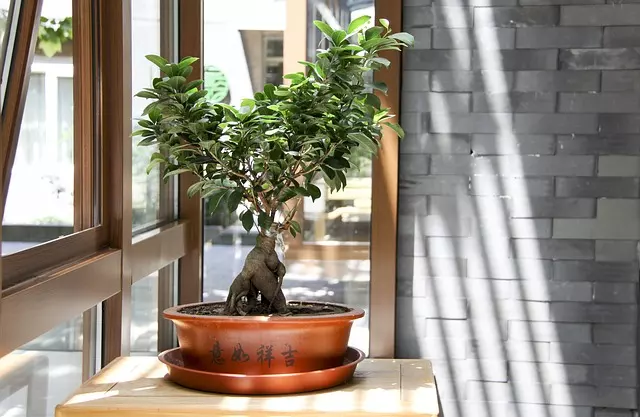
Where to Buy Bonsai Tree?
The easiest way to start is to buy a small bonsai more or less already shaped. There are bonsai species that are easier to care for than others, so here are the options you should buy to get started in the world of bonsai.
Remember these bonsai tree are easy to care for, so go ahead and get your new bonsai now.
How to Care for a Bonsai Tree
Location of the Bonsai Tree
There are no indoor bonsai, all trees need to live outdoors.
Try to grow your bonsai outdoors all year round if it is deciduous and most of the year, if it is a tropical or subtropical species and you live in an area with cold periods during the year.
If you have a garden or terrace, that is the ideal year-round location. Avoid a southern orientation in full sun next to a wall because the sun will dry out the pot more often. The best orientation is West or East in an area of sun and shade with good ventilation.
During the time you grow it indoors (only during the cool season of the year), avoid direct sun through the window panes. The best orientation is West, East, or South without direct sun, close to the window. Avoid North orientation, as there will not be enough light.
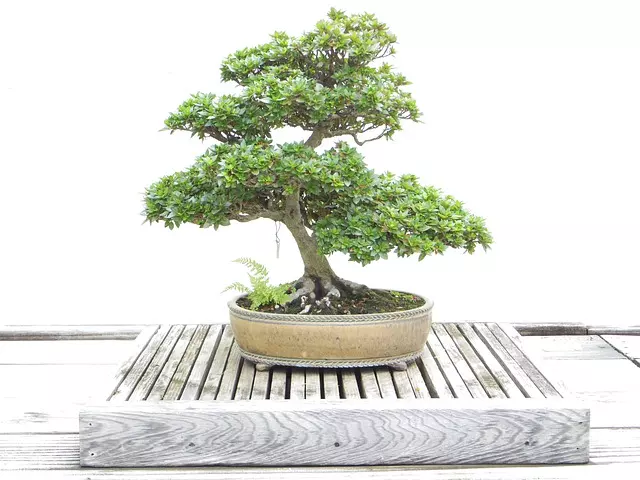
Suitable Pot for Bonsai Tree Care
The pot is chosen in proportion to the size of your bonsai and as a complement to its colors, style, and silhouette. A specially designed pot is not essential for growing bonsai, but it is desirable.
Woodland styles use shallow flat oval pots or stone slabs.
Cascading styles are grown in tall pots, more than 2 or 3 times the height of the tree to provide enough space for the branches to hang down.
Looser styles, such as bunjin or literati, prefer round pots.
Upright styles, whether formal or informal, often use rectangular or deep oval pots.
Make sure your pots have good drainage holes, legs, and a good base to ensure that your bonsai has good drainage and that its roots never run completely dry.
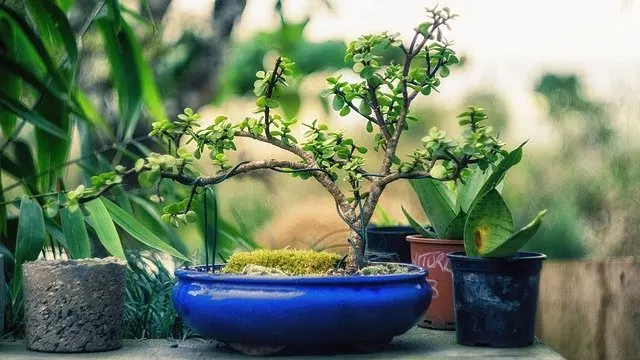
Soil for Bonsai Tree
For the care of a bonsai tree, soil that guarantees adequate drainage, humidity and aeration are necessary.
There is a soil called Akadama, which is a volcanic soil of Japanese origin and preferred by many enthusiasts, it is advisable, as a beginner, to use any of the ready-made soil mixtures sold in specialized bonsai centers, since using only Akadama, without mixing, does not allow you to make too many mistakes with watering or fertilizing.
A standard, universal mix for any type of bonsai should contain equal parts:
- Volcanic gravel to facilitate drainage and aeration.
- Clay to aid water retention and compost fixation.
- Mulch to provide nutrients and regulate acidity.
These are some bonsai soils that we highly recommend at The Garden Style:
Repotting Bonsai Tree
Bonsai tree repotting is very important for its proper care. The main reason for repotting is the health of the bonsai. It is urgent to repot if water is being absorbed with difficulty, if the root ball is lifting out of the pot or if there is a root rot problem.
Observe the buds in spring and repot when the buds are swollen and begin to open. If they have already opened, it is too late for you to repot.
If you are repotting and have doubts about the number of roots to prune, a sure trick to avoid damaging the tree is to leave 1/3 more root volume than the aerial part (crown).
Don’t forget to pile some soil on the site where you will just place the bonsai, as leaving the base of the trunk between the roots without soil can cause rotting.
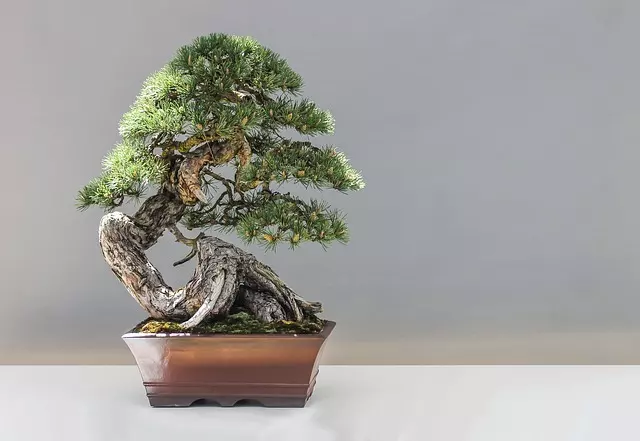
Watering Bonsai Tree
Watering is the most important technique for the care of your bonsai tree and you should learn and master it as soon as possible.
Never water your bonsai by immersion, despite what some books of dubious quality or unprofessional bonsai dealers advise.
You have to water every time the surface starts to dry out and do it thoroughly until abundant water comes out of the drainage. Use a watering can with holes as fine as possible and never leave water retained in trays that are in permanent contact with the roots or the base of the pot.
Rainwater is the best for watering and in the absence of rainwater, use water with the lowest possible hardness (salt content), but this does not mean that you should water with distilled water because you will kill your tree.
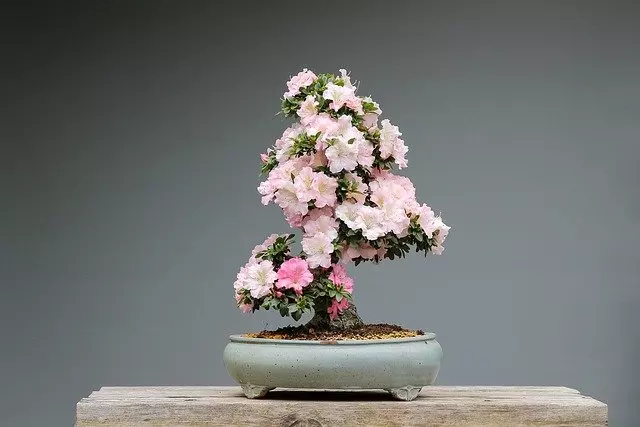
Fertilizing Bonsai
Never fertilize a weak or sick bonsai.
Your bonsai needs nutrients to feed itself through photosynthesis. Basically, it needs you to provide it with:
– hydrogen (from water),
– carbon (which it takes from the atmosphere),
– nitrogen, phosphorus, and potassium (which it takes from the soil),
– and in smaller quantities other trace elements: iron, sulfur, magnesium, etc. (which it takes from the soil).
Nitrogen is related to the health and growth of the aerial part (leaves, stems, etc.); potassium to the flowers and fruits, and the immune system of the plant; phosphorus to the health of the roots; hydrogen and carbon in the elaboration of organic substances (sugars, hormones, amino acids, etc.).
The best fertilizer is solid organic fertilizer. Use only fertilizers sold in specialized bonsai centers like this one (Order it here).
The two periods of intense fertilization are in spring and autumn, to guarantee the annual sprouting and the accumulation of reserves for the following year.
Wiring Bonsai
Wiring is above all a cultivation technique that allows sun and fresh air to reach all the branches and leaves of the bonsai, facilitating a vigorous and healthy development of the tree.
In addition, it is a technique that allows you to mold the bonsai in the style you want, in this way you will provide the correct care to your bonsai tree.
The wire allows you to hold the branches in the desired position until they lignify. Care must be taken that it does not get marked and remove it before this happens.
You always have to place the twist of the wire in the same direction that you are going to place a branch. For example, if you want to bend the branch to the left, the wire should be placed in a left-hand twist.
The wire is removed in the opposite direction to that in which it was removed and cut into small pieces, which will avoid damaging the branches. A tree that is not comfortable with wire is a tree that does not need it.
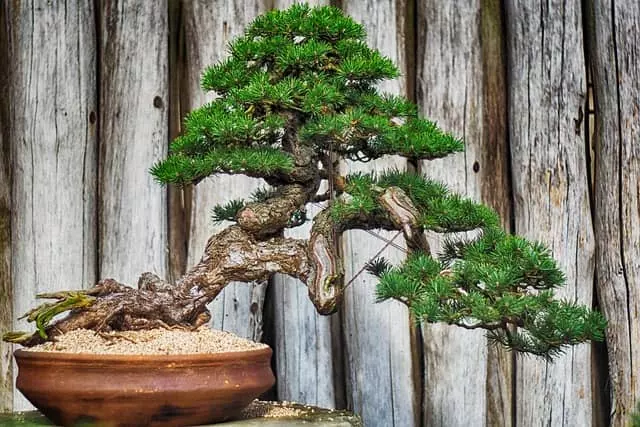
Pruning Bonsai Tree
Pruning and pinching are two essential techniques for care the health and shape of your bonsai tree, as well as for reducing leaf size. Pinching is especially important for conifers (pine, juniper, yew, cryptomeria, cypress, cedar, podocarpus, etc.).
Pruning should not be confused with pinching. Pruning is done on the branches of previous years and pinching on the young branches of the last budding.
To properly shape your bonsai, you should remove all the shoots that are born under another branch, inside a curve, and all those that appear forming a circle at the intersections of the branches because they produce bulges that can become larger than those at the base of the trunk.
In general, most bonsai are pruned or pinched to 2 or 3 leaves when the branches and leaves are sufficiently mature and developed. Spring is usually the most appropriate time, but it depends on the particular species.
Try to cut the branches as close as possible to the trunk, avoiding leaving stumps, and try to use appropriate and sharp tools.
Apply cutting paste on the wounds and you will avoid diseases (Order it here).
- Japanese cutting paste for Bonsai tree after pruning. It is an authentic bonsai tool from Japan.
- Please apply Kiyonal to the cut branch, limb, twig after pruning and grafting.
- Paste will last a very long time. Dries quickly and easy to apply.
Essential Bonsai Tools
With the tools listed below, you have 80/ 90% of your bonsai needs covered when you are starting. And remember that using the right tools ensures proper bonsai tree care.
With these tools, you will be ready to start. Remember to always disinfect them with alcohol before using them. Disinfecting the tools before working on the bonsai will ensure proper care of the bonsai tree.
Recommended Books about Bonsai
On this website, we will be constantly putting information about bonsai tree and their care, but if you want more information we leave you some bonsai books that we recommend.
Learn more about How to Prune Bonsai Tree. We hope this guide on how to take care of a bonsai tree will be useful. Subscribe to our newsletter and you will receive information every week.













